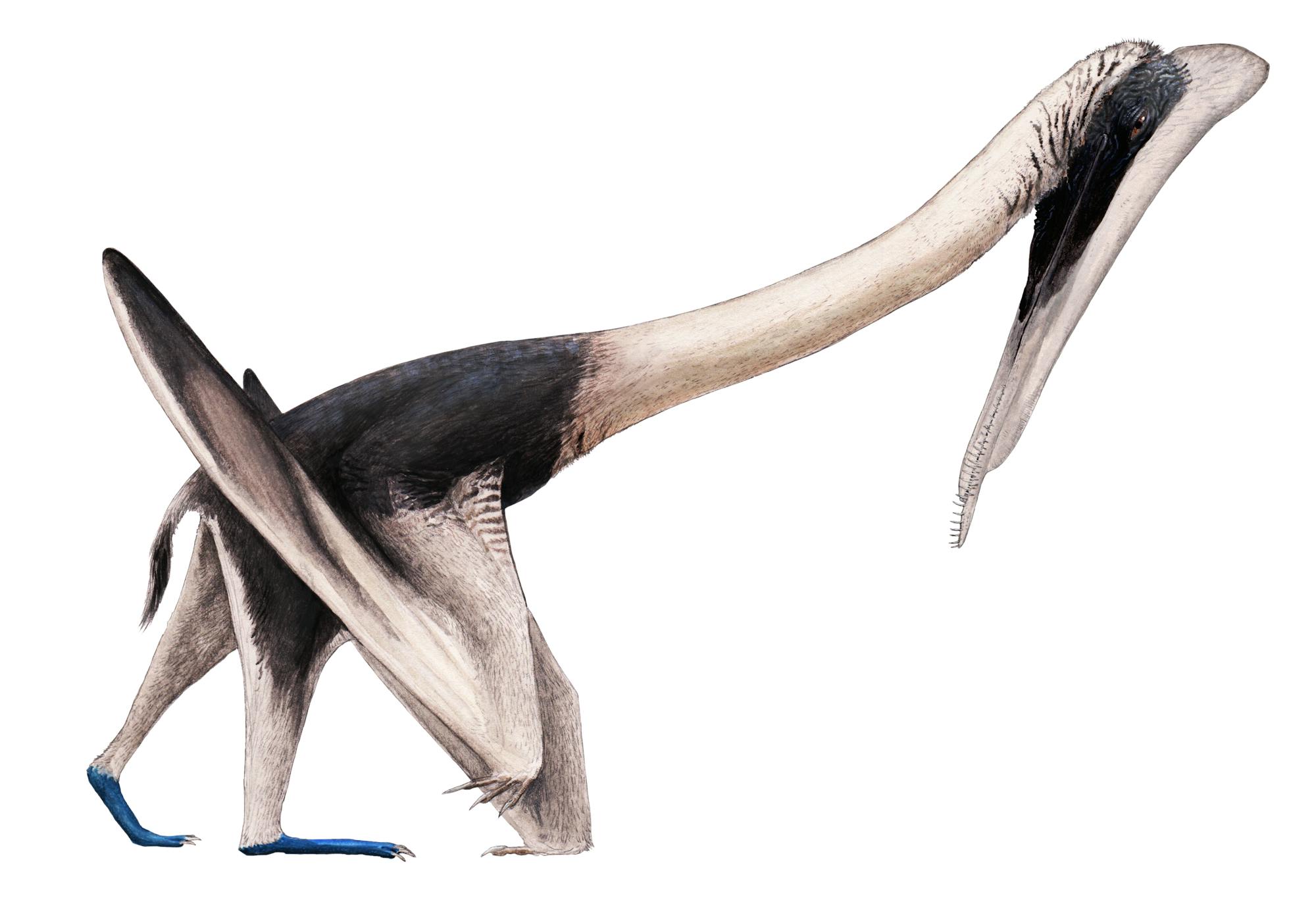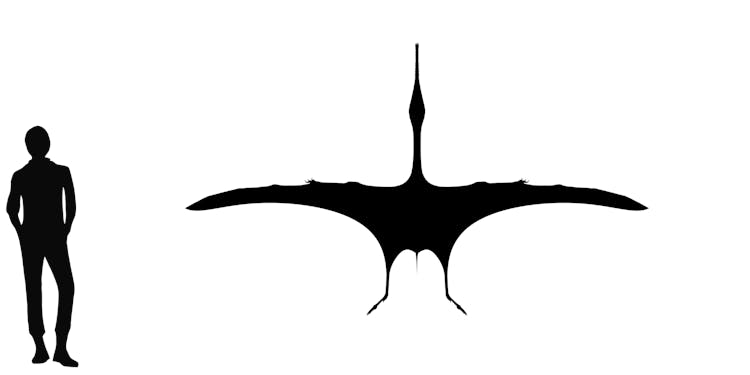


In 2005 paleontologists Xiaolin Wang, Alexander Kellner, Zhonghe Zhou, and Diogenes de Almeida Campos described a newly discovered pterosaur from the Lower Cretaceous Yixian Formation of Liaoning, China. This new pterosaur, named Feilongus youngi, is known from a single well-preserved skull with a lower jaw.
The skull is very long and low, superficially stork-like, with a slightly upturned tip to the upper jaw. The total length of the skull is about 40 cm (16 inches) long, which would suggest a wingspan of 2.4 m (8 feet). Wang and colleagues note that because some bone sutures were not fully fused, the animal was probably not fully grown when it died. There are two small crests seen on the skull, the first was a low ridge on the top of the upper jaw, the second was a low semicircular hump on the back of the skull. It's likely that one or both of the crests were enlarged with soft tissue, as is seen in well-preserved fossil relatives.
The teeth are restricted to the distal third of both upper and lower jaws. They are needle-like and curved, and increase in length toward the ends of the jaws. The teeth near the jaw tips are displaced, so it is impossible to judge their exact orientation. Many pterosaurs with similar teeth, have the teeth arranged in an interlocking sieve, used for trapping small animal prey such as crustaceans.
Feilongus is one of several small- to medium-sized suspension-feeding pterosaurs known from rocks of the Yixian Formation, deposited about 125 million years ago. The Yixian Formation is a type of fossil deposit known as a lagerstätte, famous for its exceptional preservation of birds and other feathered dinosaurs. The ecosystem of the Yixian at the time of deposition was a temperate forest crossed by rivers and dotted by lakes. Feilongus likely waded in shallow water and trapped small prey items in its teeth.
When first described, Feilongus was considered to be most closely related to the gallodactylids, within a larger group of early suspension feeding pterosaurs known as ctenochasmatoids. A 2012 phylogenetic analysis by Lü Junchang and colleagues found Feilongus to be most closely related to the contemporaneous Moganopterus within the boreopterids. Boreopterids were in turn found to be closely related to the aerial fishers known as ornithocheiroids. A 2013 phylogenetic analysis published by Brian Andres and Timothy Myers also found Feilongus to be close to the gallodactylids. A later analysis by Brian Andres, James Clark, and Xing Xu found Feilongus to be a gnathosaurine ctenochasmatid most closely related to Mogonopterus. The ctenochasmatids are a diverse lineage of suspension feeding pterosaurs that were common in fresh water and marine environments from the Late Jurassic to the Early Cretaceous.
